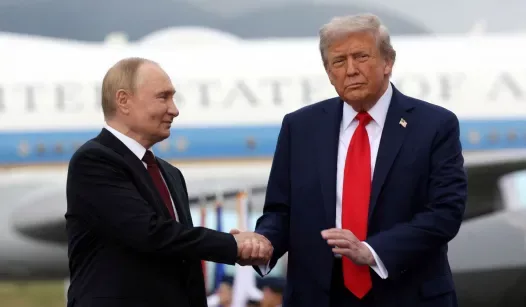In recent discussions surrounding U.S. foreign policy, particularly regarding NATO and Russia, former President Donald Trump has expressed views that raise eyebrows among political analysts and foreign policy experts. His approach suggests a potential misreading of Russia’s intentions and capabilities, especially in light of the ongoing tensions in Eastern Europe.
The question that looms large is whether Russia has the opportunity to challenge NATO without incurring significant costs. To understand this, we must delve into the current geopolitical landscape, Russia’s military strategy, and NATO’s response mechanisms.
Russia’s military posture has been increasingly assertive, particularly following its annexation of Crimea in 2014 and its ongoing involvement in Eastern Ukraine. These actions have not only strained relations with the West but have also prompted NATO to bolster its eastern flank. The alliance has deployed additional troops and resources to member states bordering Russia, signaling a commitment to collective defense.
However, Trump’s rhetoric often implies a belief that NATO members are not pulling their weight, suggesting that the alliance is more of a burden than a strategic asset. This perspective could lead to a dangerous underestimation of Russia’s ambitions. While it is true that some NATO members have lagged in defense spending, the alliance as a whole remains a formidable deterrent against potential Russian aggression.
Moreover, the notion that Russia can challenge NATO “on the cheap” overlooks the complexities of military engagement. Russia has indeed invested in modernizing its armed forces and enhancing its capabilities, but any direct confrontation with NATO would likely come at a high cost. The alliance’s collective defense principle, enshrined in Article 5 of the North Atlantic Treaty, means that an attack on one member is considered an attack on all. This principle has been a cornerstone of NATO’s deterrence strategy for decades.
Furthermore, the economic repercussions of a military confrontation with NATO would be significant for Russia. The country is already grappling with the effects of international sanctions imposed after its actions in Ukraine. Engaging in a military conflict with NATO could exacerbate these economic challenges, leading to further isolation and instability.
The U.S. role within NATO is crucial, and Trump’s approach raises concerns about the future of American leadership in the alliance. His suggestion to prioritize bilateral agreements over multilateral commitments could weaken NATO’s cohesion and effectiveness. A fragmented approach to security could embolden Russia, as it may perceive divisions within the alliance as an opportunity to test NATO’s resolve.
In contrast, a unified NATO response to Russian aggression is essential. This includes not only military readiness but also diplomatic efforts to address the underlying tensions. Engaging in dialogue with Russia, while maintaining a strong defensive posture, is a delicate balance that requires careful navigation.
Looking ahead, the U.S. must reaffirm its commitment to NATO and work to strengthen the alliance. This involves encouraging member states to meet their defense spending commitments and fostering collaboration on security issues. Additionally, the U.S. should support diplomatic initiatives aimed at reducing tensions with Russia, while remaining vigilant against any aggressive moves.
In conclusion, Trump’s interpretation of Russia’s capabilities and intentions may lead to a dangerous underestimation of the challenges posed by Moscow. The idea that Russia can confront NATO without significant costs is a miscalculation that could have serious implications for global security. As the geopolitical landscape continues to evolve, it is imperative for U.S. policymakers to adopt a nuanced understanding of the complexities at play and to prioritize a united NATO response to any potential threats.
